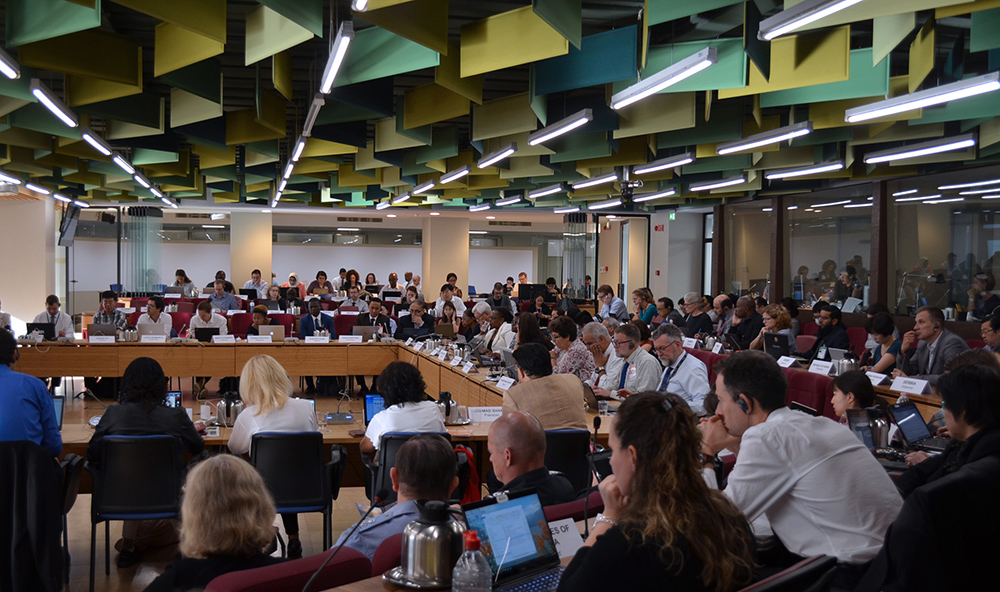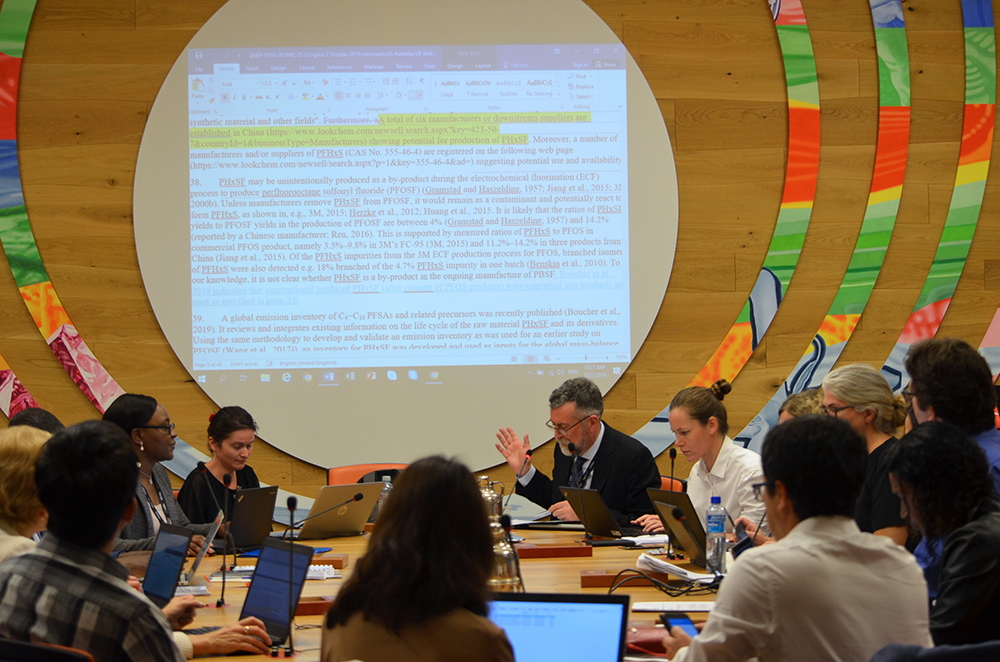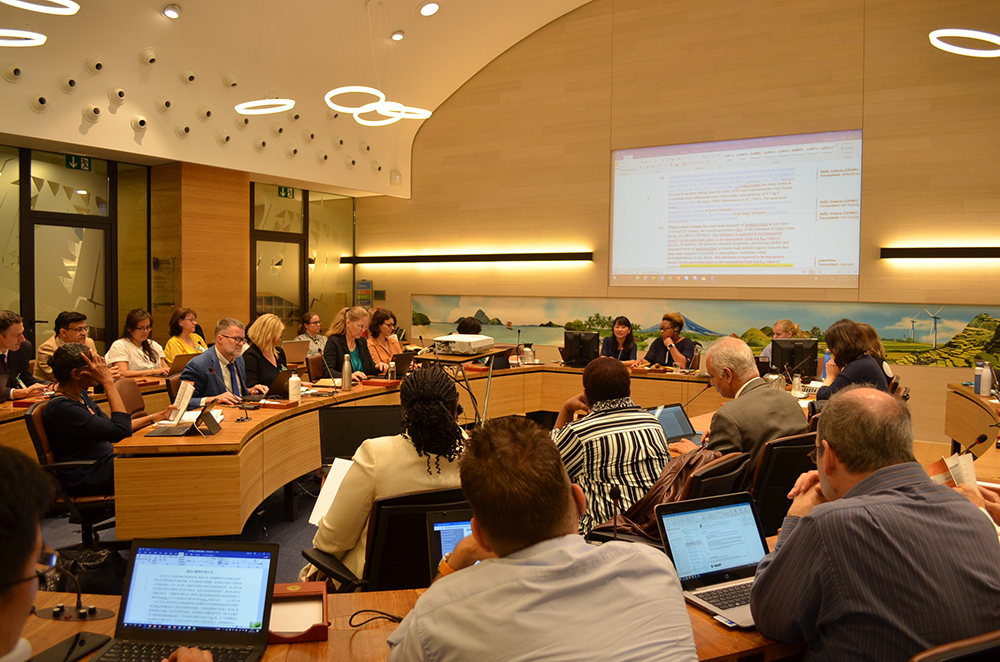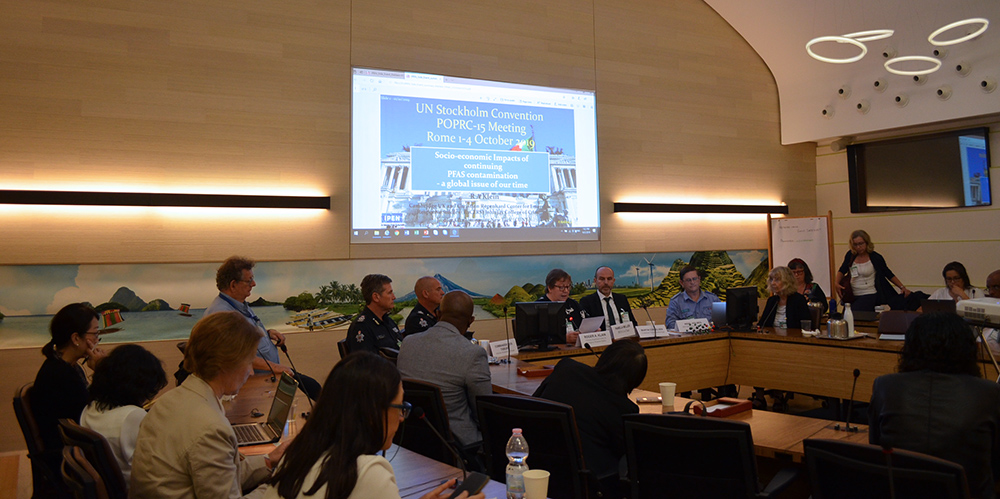Summary
Highlights for Wednesday, 2 October 2019

On Wednesday morning, POPRC-15 gathered in plenary to receive updates from the Chairs of the contact groups on perfluorohexane sulfonic acid (PFHxS) and methoxychlor. Delegates also addressed two new agenda items: the review of outcomes of the ninth meeting of the Conference of the Parties to the Stockholm Convention on Persistent Organic Pollutants (POPs) that were relevant to the POPs Review Committee (POPRC), and the Secretariat’s report on activities to support effective participation in the work of the Committee. The rest of the day was dedicated to work in contact groups on the three chemicals currently under review.
The contact group on PFHxS met in the morning and afternoon and worked steadily through the draft risk management evaluation, paragraph by paragraph, to clarify the text and ensure that any outstanding concerns could be resolved.
The contact group on the proposal to list methoxychlor, which met in the morning, completed its initial discussions of the Annex D screening criteria (chemical identity, persistence, bioaccumulation, adverse effects, and potential for long-range environmental transport), paying particular attention to questions related to chemical identity and bioaccumulation.
In the afternoon, the contact group tasked with addressing the proposal to list Dechlorane Plus convened for the first time, working through information in Norway’s proposal to list this substance in order to determine whether it contained sufficient information to satisfy each of the screening criteria.
Two back-to-back side events on per- and polyfluoroalkyl substances (PFAS) were held during the lunch break. The first, hosted by the International POPs Elimination Network, offered information on the socioeconomic costs of PFAS contamination. Panelists emphasized that the ideal solution to PFHxS contamination of humans and the wildlife is listing in Annex A with no exemptions. Mick Tisbury, of the United Firefighters Union of Australia, underscored that while exposure to fire-fighting foams is unavoidable, exposure to PFAS can be avoided through the use of safe and available fluorine-free foam alternatives.
The second side event, hosted by the FluoroCouncil, focused on societal benefits, responsible manufacture, and uses of fluorotechnology. Kevin Cockshott, AGC Chemicals Europe, highlighted the attributes of fluorotechnology, which include resistance to most acids and bases, a long working life, and no change to properties in wet environments. Emir Demircan, SEMI Europe, highlighted the importance of fluoro-materials to semiconductor processes and equipment, and emphasized that semiconductors enable a “digital, secure, and sustainable future.”
As the contact groups on the newly proposed chemicals moved towards completion of their mandates, some delegates anticipated moving to drafting groups (open to POPRC members only) to finalize decision text earlier than expected on Thursday.
IISD Reporting Services, through its Earth Negotiations Bulletin (ENB) meeting coverage, provided daily web updates and a summary and analysis report from POPRC-15.



